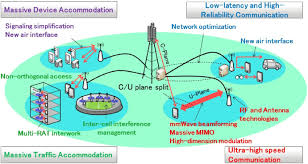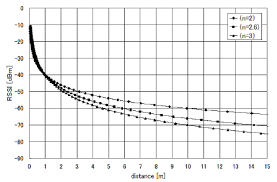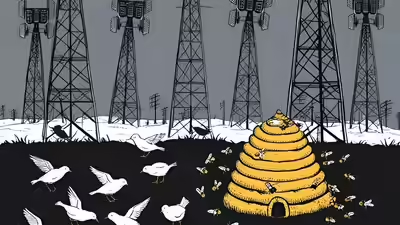INTRODUCTION:
The world is upgrading at an extraordinary pace, and at the heart of this transformation lies 5g—the fifth generation of mobile networks. More than just delivering faster internet, 5g promises ultra-low latency, greater bandwidth, and the capacity to connect billions of devices seamlessly. It is reshaping how we live and communicate, powering innovations such as cloud gaming, immersive virtual reality, autonomous systems, and the Internet of Things, making our digital experiences more connected and interactive than ever before.

What is 5G?
Before understanding 5G, it’s important to recognize the real-life limitations of 4G networks. We’ve all experienced them, such as during an important video call, when the screen suddenly freezes just as you start speaking. These issues highlight the shortcomings of 4G and create the need for a more advanced network. That’s why the leap from 4G to 5G is so significant.
When 4G was introduced around 2009–2010, it truly transformed the digital world. For the first time, people could enjoy smooth HD video streaming, real-time navigation, online gaming, and app-based services without major interruptions. 4G played a key role in the rapid rise of platforms like YouTube, Instagram, WhatsApp, and Uber, as its networks supported speeds of up to 100 Mbps. Despite these breakthroughs, 4G was not just about faster internet—it marked the beginning of a revolutionary era often described as the smartphone era.
Nevertheless, as technology advances, the demand for faster and more reliable networks continues to grow. Billions of smartphones and connected devices, along with emerging applications such as cloud gaming, 4K video streaming, and virtual reality, are already pushing 4G to its limits. In today’s world, we need networks that are not only faster but also smarter and more dependable. To meet these challenges, 5G has emerged as the solution.
5g, the fifth generation of mobile networks, was commercially launched in 2019, marking a major technological leap forward. Unlike 4G, which was primarily designed for mobile internet, 5g delivers lightning-fast speeds of up to 10 Gbps, an ultra-low latency of just 1 millisecond, and the ability to connect millions of devices within a small area simultaneously. These features make 5g the true backbone of future technologies.
With its advanced capabilities, 5g enables innovations such as self-driving cars, which rely on real-time data exchange made possible by low latency. It also powers smart cities, enhancing healthcare systems, supporting industrial automation, and delivering immersive AR/VR experiences. In short, 5g is not just an upgrade—it is a foundation for the next era of digital transformation.

What Is The Physics Behind It?
The Scottish scientist James Clerk Maxwell introduced the electromagnetic theory in 1864. His work revealed that microwaves, radio waves, and visible light are all forms of the same type of electromagnetic wave, differing only in frequency and wavelength. Maxwell’s discoveries laid the foundation for modern wireless communication. More than a century later, his principles have evolved into technologies like the 5G network, enabling billions of devices to connect and communicate seamlessly across the globe—all made possible by the vision set forth in his groundbreaking theory.
4G and 5G both transmit data using electromagnetic waves, but 5G goes far beyond 4G by utilizing higher frequency bands, advanced antennas, and intelligent network design with an ultra-low latency rate. At its core, the backbone of 5G lies in the relationship between frequency and wavelength, which provides the foundation for its performance.
The equation defines this relationship: c=f⋅λ
where:
λ(lambda)= wavelength (m)
c = speed of light (~3×108 m/s3 \times 10^8 \, m/s3×108m/s)
f = frequency (Hz)
5g has a high frequency and a shorter wavelength, which allows it to carry more data, although it travels shorter distances and is easily blocked by obstacles.
To know the maximum data rate that 5 G can handle, use the Shannon-Hartley theorem:
C=B⋅log2(1+SNR)

In the Shannon–Hartley theorem, C is the channel capacity, which is measured in bits per second, B is the bandwidth, which is measured in hertz, and SNR is the signal-to-noise ratio. By using wider bandwidths, it improves SNR through high-tech technology, and 5G can theoretically achieve data rates up to 10 Gbps, which far surpasses the capabilities of 4G.
Friis’ transmission equation is used to describe the relation of signal strength over distance:
Pr=Pt⋅Gt⋅Gr(4πdλ)2
where:
- Pr = received power
- Pt = transmitted power
- Gt,Gr = transmitter and receiver antenna gains
- λ(lambda) = wavelength
- d= distance between antennas
This equation describes that as frequency increases, wavelength (lambda) decreases, resulting in a sharp drop in received power. That’s why 5 G high-frequency signals are blocked by obstacles, which decreases their range, so it requires highly dense networks in a small area and also needs advanced technology like beamforming, which directly shoots a beam towards users to maintain the strong and reliable communication.

5 G is also relies on massive MIMO antennas, which can receive and send multiple signals simultaneously, and network slicing, which allows different applications that use in autonomous cars, IoT devices, and high-speed streaming to share the same networks efficiently. Latency playss a crucial role for high-speed data because it is the sum of time of input and out, which plays an important role for real-time applications.. The formula is:
Latency≈ Speed of Signal Distance+Processing Time
Processing Time = additional delay due to encoding, decoding, switching, routing, etc.
Distance ÷ Speed of Signal = propagation delay (time it takes for the signal to travel through the medium).
Thanks to these technologies, which enable 5G to achieve ultra-low latency, a rate that supports connecting a million devices in a small area, enabling the creation of smart cities, remote healthcare, and immersive AR/VR. From Maxwell’s electromagnetic waves to today’s 5G networks, the journey of physics continues to shape the way we connect and communicate.
Drawbacks Of 5G?

In this universe, everything has its pros and cons, and the same applies to 5G. In the previous section, we explored the advantages of 5G and how it works, but now let’s focus on its drawbacks. While 5G delivers lightning-fast internet speeds, ultra-low latency, and massive device connectivity, it is not without limitations and potential environmental impacts. One of the major challenges lies in its reliance on high-frequency millimeter waves. These waves have short wavelengths and limited range, which makes it necessary to install a dense network of small cells and towers to maintain stable coverage.
Scientists are increasingly studying the potential impact of 5g’s high-frequency waves on wildlife, particularly birds. Many bird species rely on the Earth’s magnetic field for migration, but research suggests that electromagnetic radiation from 5g may interfere with their natural navigation systems. This disruption could affect migration patterns, reproduction, and feeding behavior. The problem is more noticeable in high-density urban areas, where the rapid expansion of 5g infrastructure forces birds to avoid regions with heavy tower installations. While the long-term ecological effects are still under investigation, it is evident that careful planning, placement, and monitoring of 5g towers are essential to minimize risks and protect wildlife.
The debate around human health concerns also continues. Long-term exposure to high-frequency electromagnetic waves may have potential biological effects on the human body, such as localized tissue heating. This is why regulatory standards and continuous safety monitoring of 5g towers are essential. On the other hand, 5g also offers opportunities to reduce environmental harm. With technologies like smart grids, precision agriculture, remote monitoring, and energy-efficient automation, it can help optimize resource use and minimize waste when implemented responsibly.
In conclusion, while 5G holds the promise of connecting the world and driving technological progress, its energy footprint, infrastructure demands, potential effects on wildlife, and human health concerns are significant drawbacks that cannot be overlooked. It is essential to balance rapid innovation with environmental sustainability and safety, ensuring that 5G enhances human life without causing harm to nature or other living beings.
INTERNAL LINKS:
KNOW ABOUT FUTURISTIC MATERIALS:
https://techman.live/top-7-futuristic-material-that-can-revolutionary/
KNOW ABOUT AGI:
https://techman.live/agi-is-revolutionary-machine-really-think-like-humans/
EXTERNAL LINKS:
KNOW MORE ABOUT 5G:
